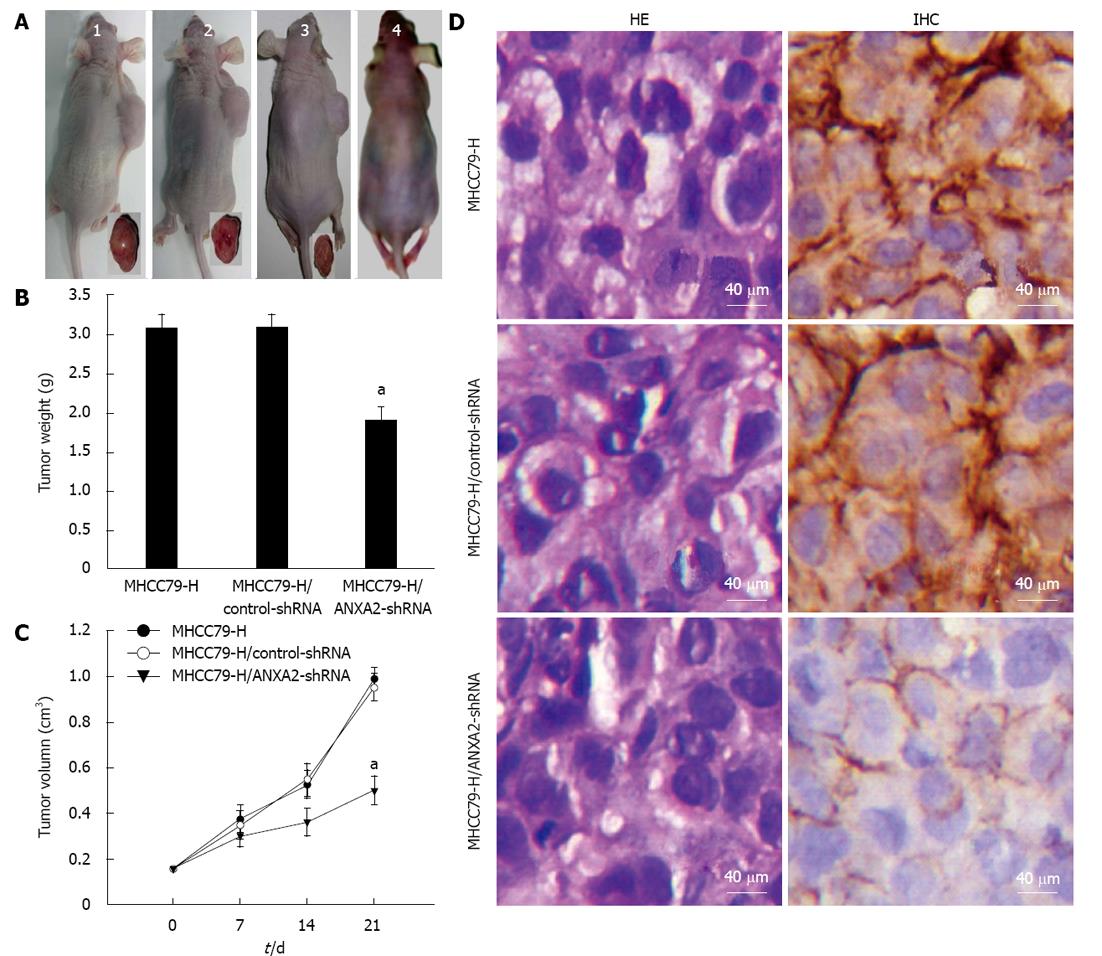Copyright
©2013 Baishideng Publishing Group Co.
World J Gastroenterol. Jun 28, 2013; 19(24): 3792-3801
Published online Jun 28, 2013. doi: 10.3748/wjg.v19.i24.3792
Published online Jun 28, 2013. doi: 10.3748/wjg.v19.i24.3792
Figure 4 Inhibitive effect of small hairpin RNA-mediated annexin A2 silencing on xenograft tumour growth in vivo.
A: Representative images of xenografted and control mice and resected tumours. The MHCC97-H (untransfected) group (1); the MHCC97-H/control-small hairpin RNA (shRNA) group (2); the MHCC97-H/annexin A2 (ANXA2)-shRNA group (3); the blank control group (4). Tumorigenic nude mice appeared obviously emaciated, especially the those in the MHCC97-H group and MHCC97-H/control-shRNA group; B: Average tumour weights. aP < 0.05 vs MHCC97-H group; C: Tumour growth rates. aP < 0.05 vs MHCC97-H group at post-injection day 21; D: Representative immunohistochemical analysis and hematoxylin and eosin staining results (× 400). The density of ANXA2 staining (brown) in the cytoplasm of MHCC97-H/ANXA2-shRNA cells was obviously lower than that for the MHCC97-H cells or the MHCC97-H/control-shRNA cells. ANXA2 was mainly localized in the membrane of the MHCC97-H/ANXA2-shRNA cells, and localized in both the membrane and cytoplasm of the MHCC97-H cells and the MHCC97-H/control-shRNA cells. The morphological characteristics of subcutaneous xenograft tumours derived from MHCC97-H/ANXA2-shRNA cells were not fundamentally different from the other tumours.
- Citation: Zhang HJ, Yao DF, Yao M, Huang H, Wang L, Yan MJ, Yan XD, Gu X, Wu W, Lu SL. Annexin A2 silencing inhibits invasion, migration, and tumorigenic potential of hepatoma cells. World J Gastroenterol 2013; 19(24): 3792-3801
- URL: https://www.wjgnet.com/1007-9327/full/v19/i24/3792.htm
- DOI: https://dx.doi.org/10.3748/wjg.v19.i24.3792









